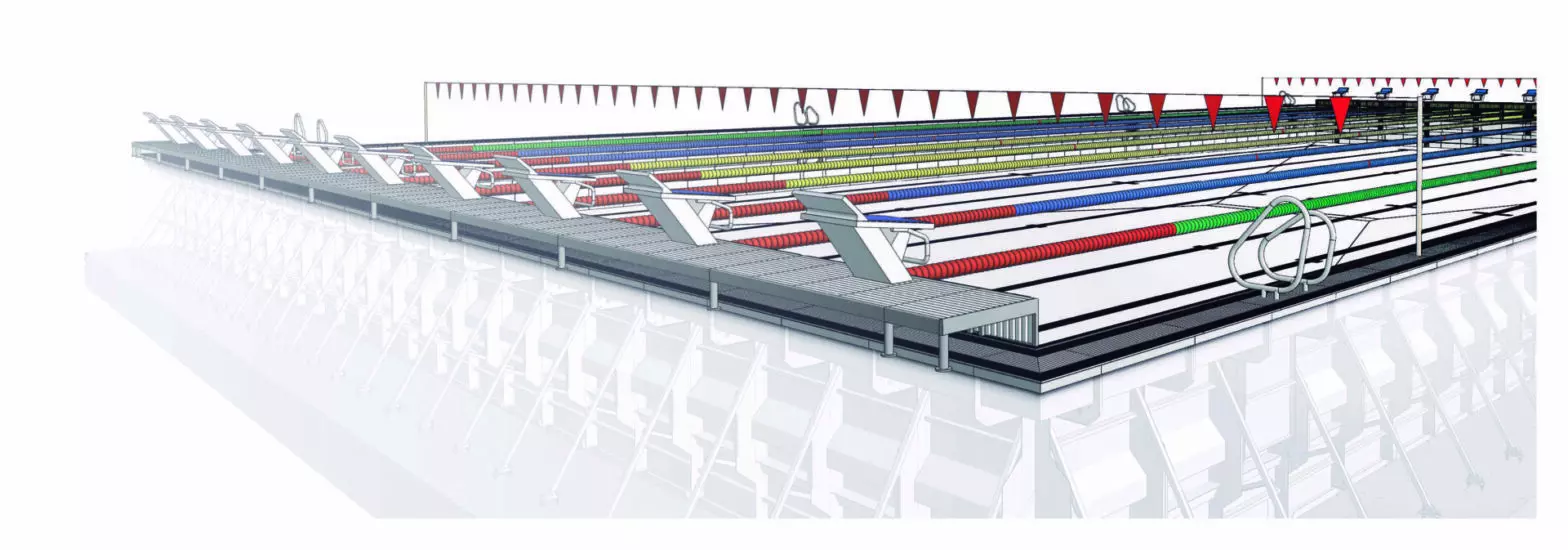
Designing an aquatic facility is a complex process, whether it be a swimming pool, a wellness installation, or a decorative fountain. It combines various disciplines and requires several specialists, which is why integrating tools and processes is of utmost importance to conceive a reliable project that complies with the timings and requirements of the client. Thus, a BIM specialist has a vital role to play, specifically a BIM aquatic specialist.
BIM (Building Information Modelling) is an intelligent 3D modelling method that allows architects, engineers, contractors and operators to access all the information about the project’s geometry, location, cost, life cycle and sustainability data. This enables them to more efficiently plan, design, execute and manage building projects.
It’s a particularly useful tool for aquatic project design as these virtual reality simulations allow designers to identify risks, analyse hydraulics, perform fluid simulation studies through CFD (Computational Fluid Dynamics) and streamline workflow. Fluidra projects are entirely designed with BIM, which allows us to analyse the design and share findings with the client through a clear visualisation.
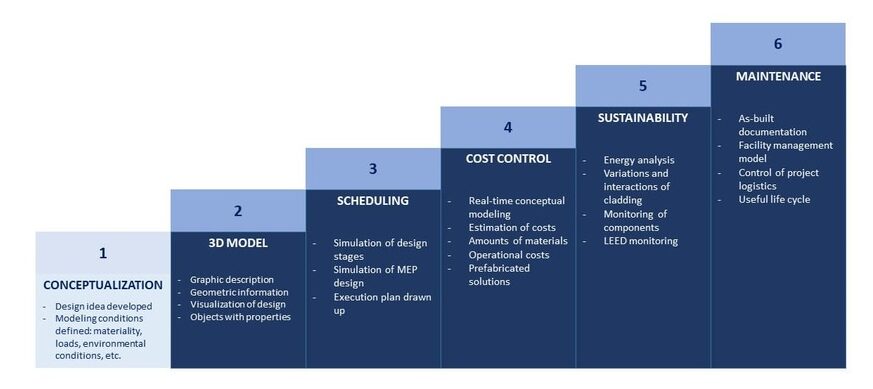
A BIM specialist will describe the workflow as comprising six different stages or dimensions. These stages and its analyses correspond to the three main phases of a project: design, construction, and operations and maintenance. Said six stages are:
- Conceptualisation. The design idea is drawn up without the software and the modelling conditions defined: materials, loads, environmental conditions, etc.
- 3D modelling. A three-dimensional image of the initial design is created and the properties are applied to the different objects.
- Scheduling. Scenarios regarding the structural and MEP design are applied and the execution plan is drawn up.
- Cost control. Costs are estimated through real-time conceptual modelling and materials and operational costs are specified. Prefabricated solutions are integrated.
- Sustainability. An energy analysis is carried out and variations and interactions of cladding and components are analysed. LEED monitoring is also applied.
- Maintenance. As-built documentation is put together with a facility management model and the life cycle of the installation and its logistics is established.
Below we will outline how these six stages correspond to the traditional three-phase realisation of a project.
During the design’s structural and architectural phases , all the pool’s physical features will be modelled. A spatial representation of the design is created as a benchmark for the other models.
A BIM specialist will also create a model of the Mechanical, Electrical and Plumbing (MEP) design. This is an aspect of pool design that often results in extra costs later down the line due to a lack of coordination. Thanks to BIM analysis, the possibility of these unforeseen expenses is extensively reduced.
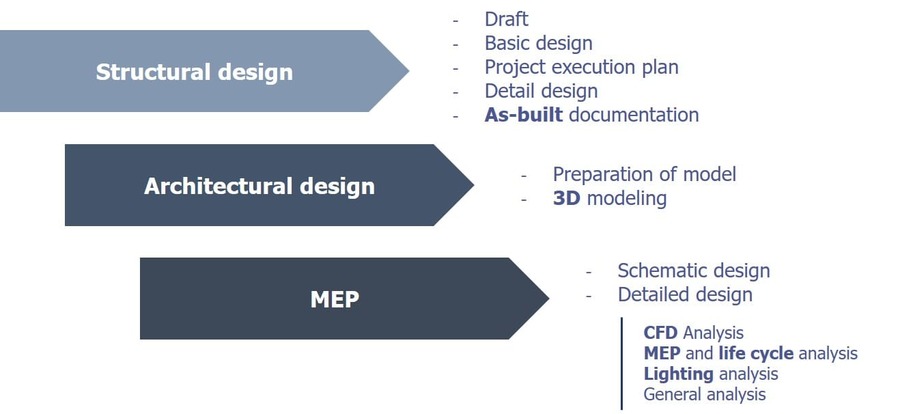
On execution, BIM improves project planning and traceability. A BIM aquatic specialist will refer to this part of the workflow as 4D BIM, which optimises the supply chain, building schedule and deadlines. All of this information is fed into a clearly legible 3D visualisation.
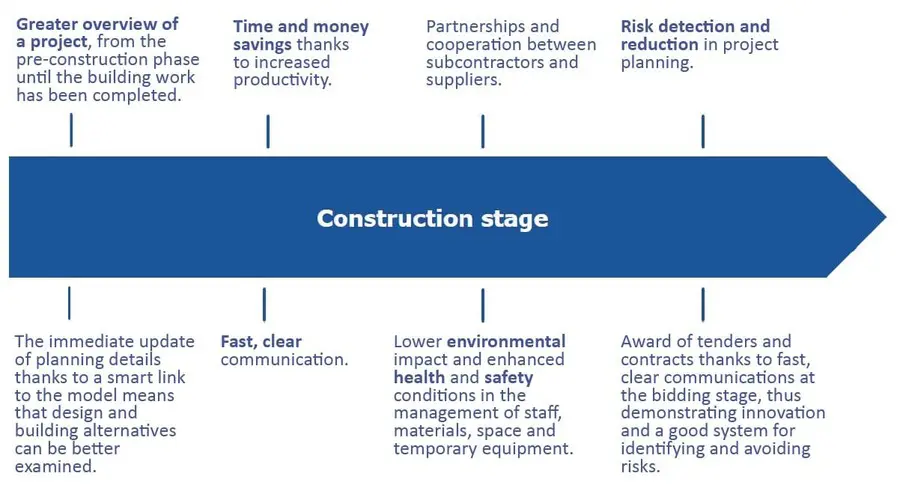
Efficient MEP control and management. BIM can also assist with facility management. Monitoring a building’s maintenance and operations.This enables operators to keep detailed records of the asset’s functioning, so they can optimise the maintenance. These records are generated in the form of an Asset Information Model (AIM), which provides a clear, easy-to-understand visualisation.
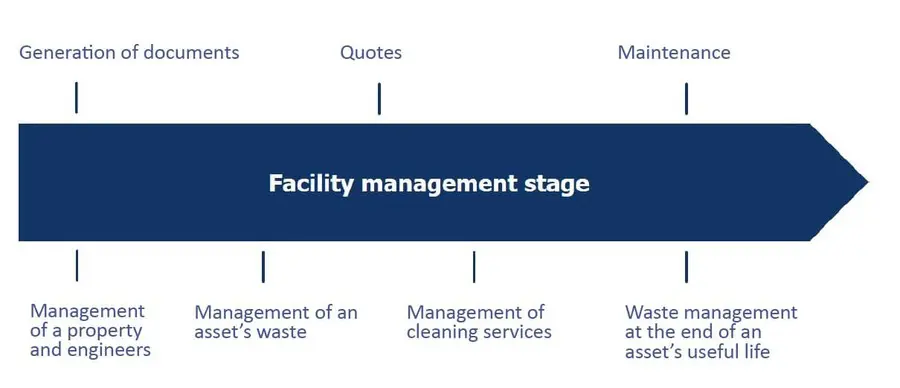
As with every design methodology, any changes made to the project will affect all disciplines. However, with BIM, these changes are traceable and coordinated. This means that timelines and costs are optimised and the chances of making mistakes mitigated. In addition to time and cost savings, the BIM modelling facilitates coordination between all project stakeholders and improves the decision-making process.
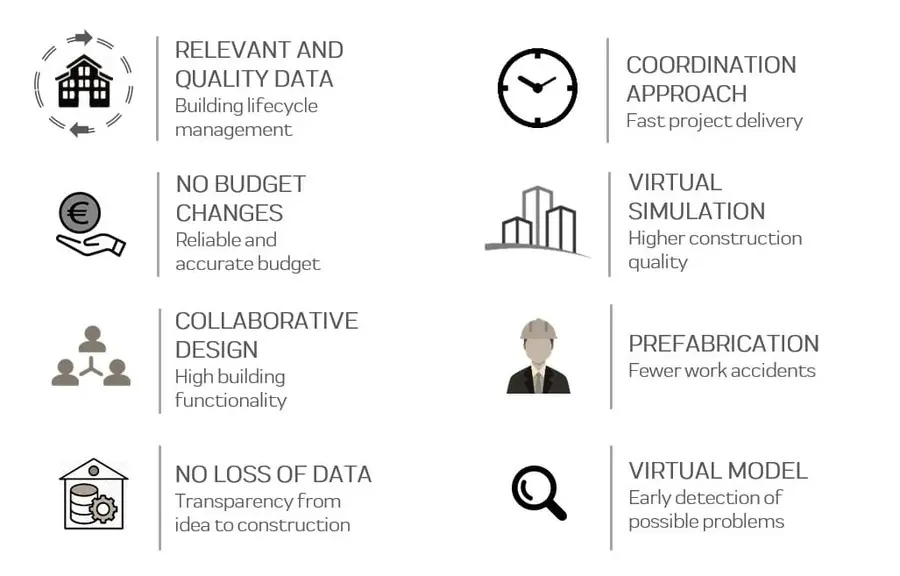
This is because all aspects of the project are planned in advance . The documentation generated for the building work is far more detailed, thus it reduces the number of possible changes. In other words, the initial stages of the project are far more reliable and streamlined, which avoids changes in the later stages that waste time and money.
Regarding efficiency and sustainability, with BIM, 50–60% less waste is generated in all phases of the project, from design to construction. From the outset, materials usage is optimised to the greatest possible extent in order to reduce waste.
In the table below there’s a comparison of the differences between designing a project with a 2D tool such as CAD, versus a 3D tool like BIM.
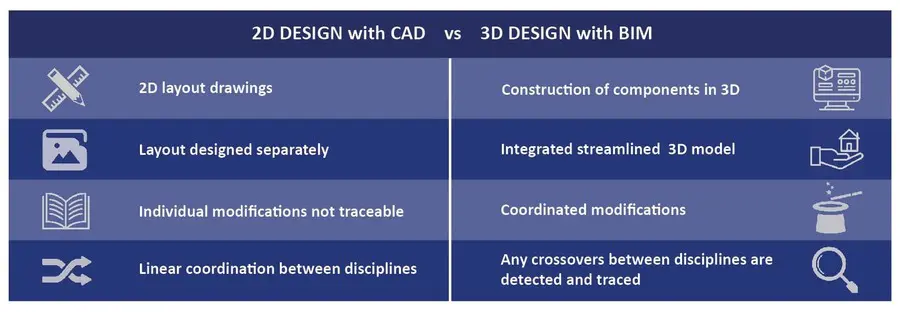
There are also differences in the design deliverables. With BIM, the level information enables greater detail in areas including the technical room, the pool basin, and the piping and valves. For example, in the technical room, the designer can specify the exact location of units, auxiliary components, conduits, and the full altimetry layout. The same level of detail for the pool shell is available as well, with the location of accessories, conduits, and information on their altimetry layout.
Besides, BIM offers more formats in which to exchange these designs: DWG, PDF, IFC, NWD (Navisworks), A360 and virtual reality.
The graph below expresses the impact of BIM design versus CAD on costs and times , and where work and impact are distributed in the project timeline.
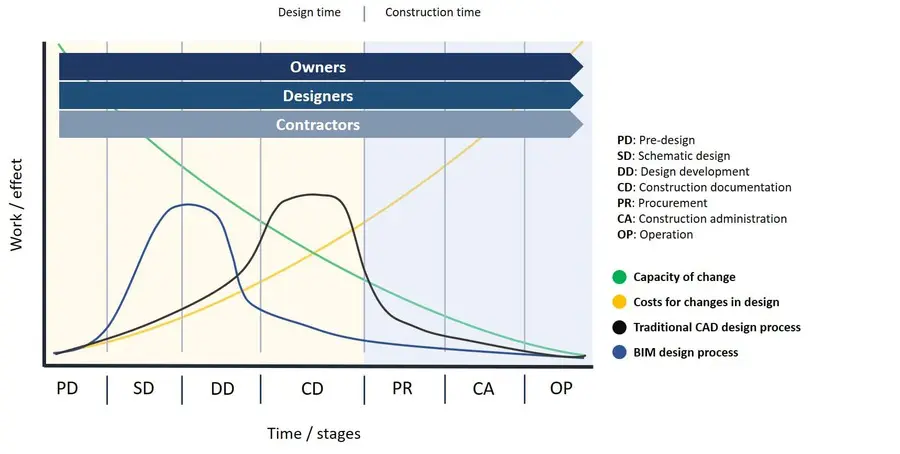
A description of the different variables apart from the design tools would be as follows:
- Capacity for change
The capacity to change the design during the execution of a project follows a downward pathway with a high concentration in the initial stages (pre-design, schematic design, etc.), where such changes do not pose significant obstacles. By contrast, as the construction stages approach, the capacity for changes diminishes and poses greater difficulties.
- Costs of changes
Changing a design has time and economic implications. These costs are different according to the project’s point at which this change occurs. In this case, the pathway shows an upward trend, where changes in the initial stages do not entail high costs as the design is still underway. However, in the later stages, any changes will involve a huge increase in the time and money invested.
Distribution of work and effect
Now, if we look at the trends regarding the work and the effect of the different design tools, you can see that with CAD the workload gradually increases later into the project. Design tasks stretch out practically into construction. Some decisions may even be made as late as the procurement stage. The capacity for change with the CAD methodology is lower and the costs arising from such changes will be higher.
In contrast, a BIM specialist will carry out the bulk of the work in the initial stages to even out the pathway later in the project. This is possible thanks to the integration between stakeholders facilitated by the tool. This brings decision-making forward, increasing the capacity for change while reducing the need for extra investment.
Furthermore, this methodology provides various deliverables and reports with the exact location of all equipment and auxiliary tools, altimetry layout, actual layouts, lists of products and accessories, the piping and valves required for a project, and so on. In contrast to CAD, BIM provides far greater flexibility and efficiency.
BIM modelling is such an effective tool because it enables integration between all the parties involved in the design, construction, and management of an aquatic facility. The BIM Aquatic specialist will be a key player that knits all of these stakeholders together, keeping them fully informed through clear visualisations .
This, in turn, will save time and money. The project will be delivered more efficiently, and these efficiency gains extend into the facility’s operation. Managers can make smart choices on maintenance and running costs while reaping the benefits of operating a more sustainable aquatic feature .
A BIM specialist, like the BIM Aquatic specialists working with Fluidra, could make a difference. Contact us to discuss the specifics of your project and how a BIM specialist could help.
